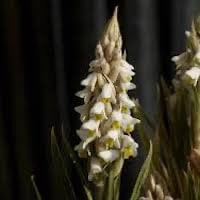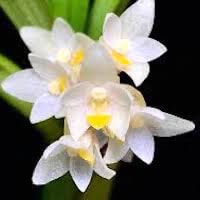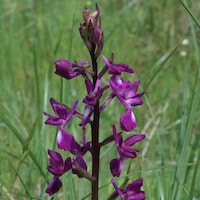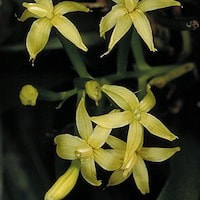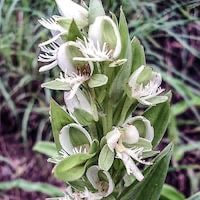MWD10- Men's Woody 10 - As clover as they come
|
Native Singaporean Orchid notes: Rhyncattleanthe Guanmiau City 'Black Flower'
Rhyncattleanthe Guanmiau City 'Black Flower' is a hybrid orchid prized for its large, highly fragrant purple flowers with a dark purple lip, created by crossing Rhyncattleanthe Molbeth and Rsc Chen's Ruby. Used in Woody 10 (Men) Team Building Perfume Workshop, its fragrance likely contributes to perfume creation. Orchids, renowned for diverse scents, vary in fragrance profiles; this hybrid may offer sweet, floral, or exotic notes. Orchids enhance perfumes, adding sophistication and luxury. Sustainable practices are crucial for preserving orchids and their habitats during fragrance extraction.
|
Therapeutic Orchid notes:
|
Zeuxine strateumatica (L.) Schltr.
Zeuxine strateumatica, known as bunched grass orchid or Xianzhu Lan in Chinese, thrives in moist, grassy areas across India, and is even considered a weed in some Asian paddy fields. Its tubers are used in traditional medicine, particularly as Salep, a remedy made from orchid tubers. Internally, Salep acts as a tonic to boost overall health. Externally, it is applied to boils for soothing and healing effects. In Bangladesh, it remains valued for its medicinal properties, although caution is advised regarding its efficacy and safety. |
|
Pinalia spicata (D.Don) S.C. Chen & J.J Wood syn. Eria spicata (D. Don) Hand.- Mazz.
Pinalia spicata, also known as Mihuaping Lan in Chinese, is an orchid species found in Nepal and other regions. It contains compounds like nudol, erianthridin, sitosterol, erianol, and a fatty alcohol. In Nepal, the stems of Pinalia spicata are used in traditional medicine. They are ground into powder for treating stomachaches and made into a paste for relieving headaches when applied externally. Scientific research on its medicinal uses is limited, so caution and professional advice are recommended before using it for health purposes. |
|
Anacamptis laxiflora
Anacamptis laxiflora, commonly known as Jersey Orchid, grows in various regions, including India, where it is called Salep misri and shala misriri. Historically, its tubers were used for medicinal purposes. They were believed to act as expectorants, helping with coughs, and were used as astringents for wound healing and diarrhea treatment. The tubers were also used to prepare salep, a beverage known for its aphrodisiac properties during the Ottoman Empire. Interestingly, grazing animals like goats and sheep tend to avoid this orchid, possibly due to its unappealing or harmful compounds. Conservation and sustainable harvesting practices are crucial when using wild orchids for traditional remedies. |
|
Apostasia wallichii R. Br.
Apostasia wallichii, known as Jianyeni Lan in Chinese, Tan khamoi or Ma thon lak in Thai, Djukut mayang kasintu in Indonesian, and Hanching fatimah or Kenching Fatimah in Malay, is a widely distributed orchid across Asia and Southeast Asia, including Nepal, India, Sri Lanka, Thailand, China, New Guinea, and Australia. It blooms throughout the year, unlike many other orchids with specific flowering seasons. In Thailand, its root is used as a tonic to enhance overall health and vitality. Historically in Malaya, it was employed for its antidiabetic properties, helping to manage blood sugar levels, which is crucial for individuals with diabetes. These traditional uses highlight its importance in local medicinal practices. |
|
Ischnogyne manadarinanum (Kranzl.) Schltr.
Ischnogyne manadarinanum, known as Shoufang Lan in Chinese, is a saxicolous orchid found growing on rocks in forests and ravines across Chinese provinces such as Shaanxi, Gansu, Hubei, Sichuan, and Guizhou. It thrives at altitudes from 700 to 1500 meters and blooms from May to June, displaying its distinctive flowers during this period. In traditional Chinese medicine, the entire plant of Ischnogyne manadarinanum is utilized for its medicinal properties, primarily to treat conditions such as coughs in tuberculosis patients and bronchitis. |
Other scent note
Scentopia Library Reference ingredient
Pine Tree - Check details at Scentopia's scent library
Download the guided mediation that works best with this Orchid fragrance oil
| men_woody_essential_oil_orchi_00010.mp3 | |
| File Size: | 115667 kb |
| File Type: | mp3 |

